If your fire risk assessment determines that you need portable fire extinguishers, it is important that they are located in the correct position. GetTesting can perform a full turnkey service for your extinguisher needs, from design & siting, to sales, installation, servicing & refilling.
With public liability, professional indemnity & failure to function insurance
Same great service for blue chips or sole traders
No ‘technicians’ – qualified service engineers only
Testing arranged to cause minimum disruption
Call us today on 0115 727 0160 or Get a Quote online
Do fire extinguishers need installing by a professional?
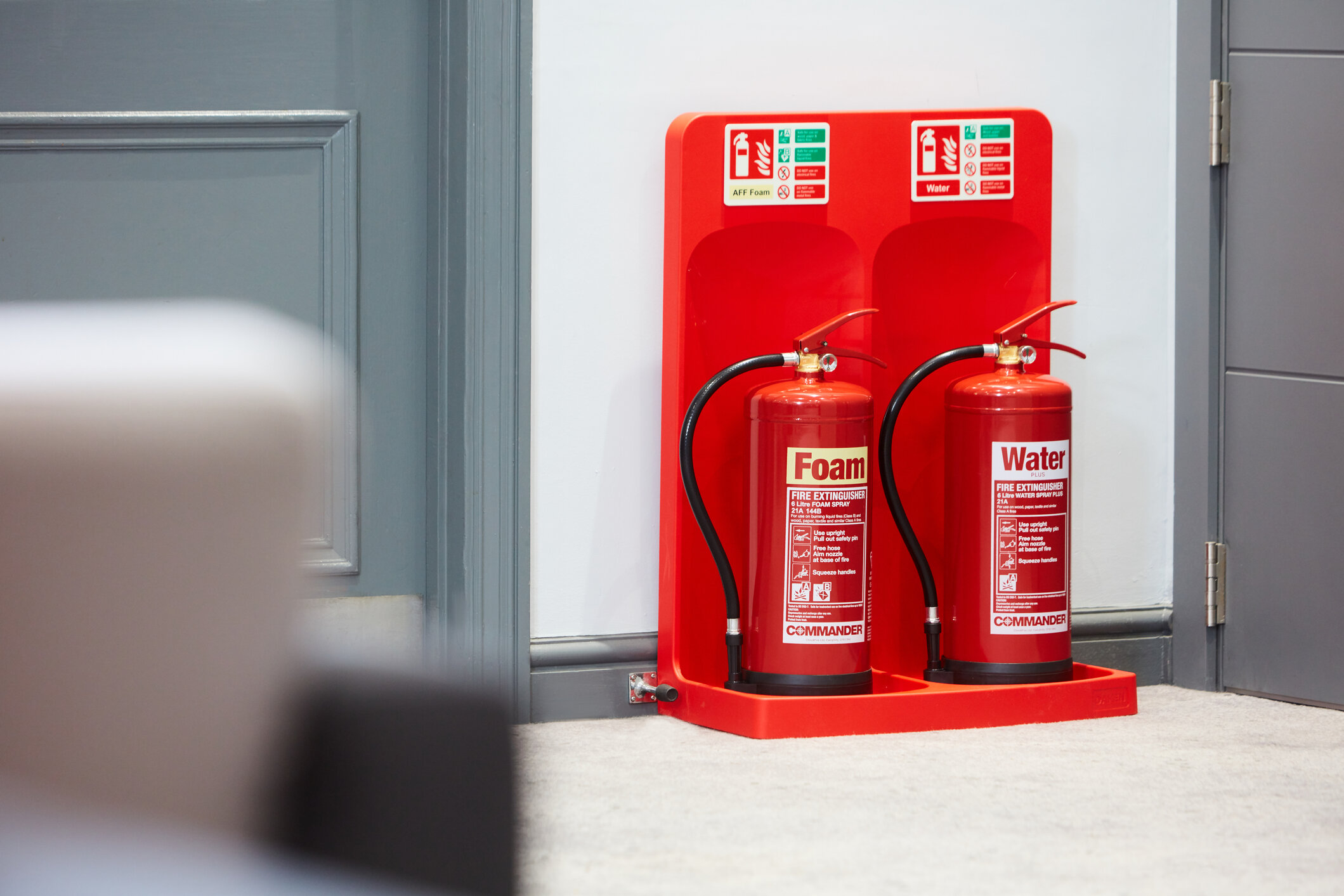
The short answer is no. When you purchase an extinguisher from a reputable source, they’ll come with instructions on how and where to install. Your fire risk assessment should have already identified the risks and the extinguisher to cover that risk should be located near. They can be installed on ‘J’ brackets that are often shipped with the fire extinguisher, or on a suitable stand or inside a cabinet.
Installation by a third-party may be preferred if there isn’t a suitably competent person available to fix the extinguishers in their correct places. This might be the lack of a handyman, or on larger jobs like an office fitout or new building.
Quick Quote
What needs to be considered when installing?
If the design has been done right and all the risks considered, siting and installing the extinguishers should be straightforward. It's important that your risks are covered, yet possible confusion and health & safety risks are minimised.
For example, a CO2 extinguisher for use on an electrical distribution board shouldn't be located inside the cupboard. It should be on the outside so that the user points it inside and doesn't asphyxiate themselves while using it.
Portable fire extinguishers should be installed with their handles at 1m from the ground to allow them to be quickly and easily accessed when needed. If they are in an area where they may be subject to damage, theft or vandalism, suitable cabinets should be used.
Possibly most importantly, even though all users should be trained, possible mixups should be avoided. Water jet extinguishers shouldn't be installed near possible electrical fires. CO2 fire extinguishers shouldn't be placed inside confined spaces & dry powder extinguishers should never be used inside. It should be clear and simple by siting the required extinguisher near the risk.
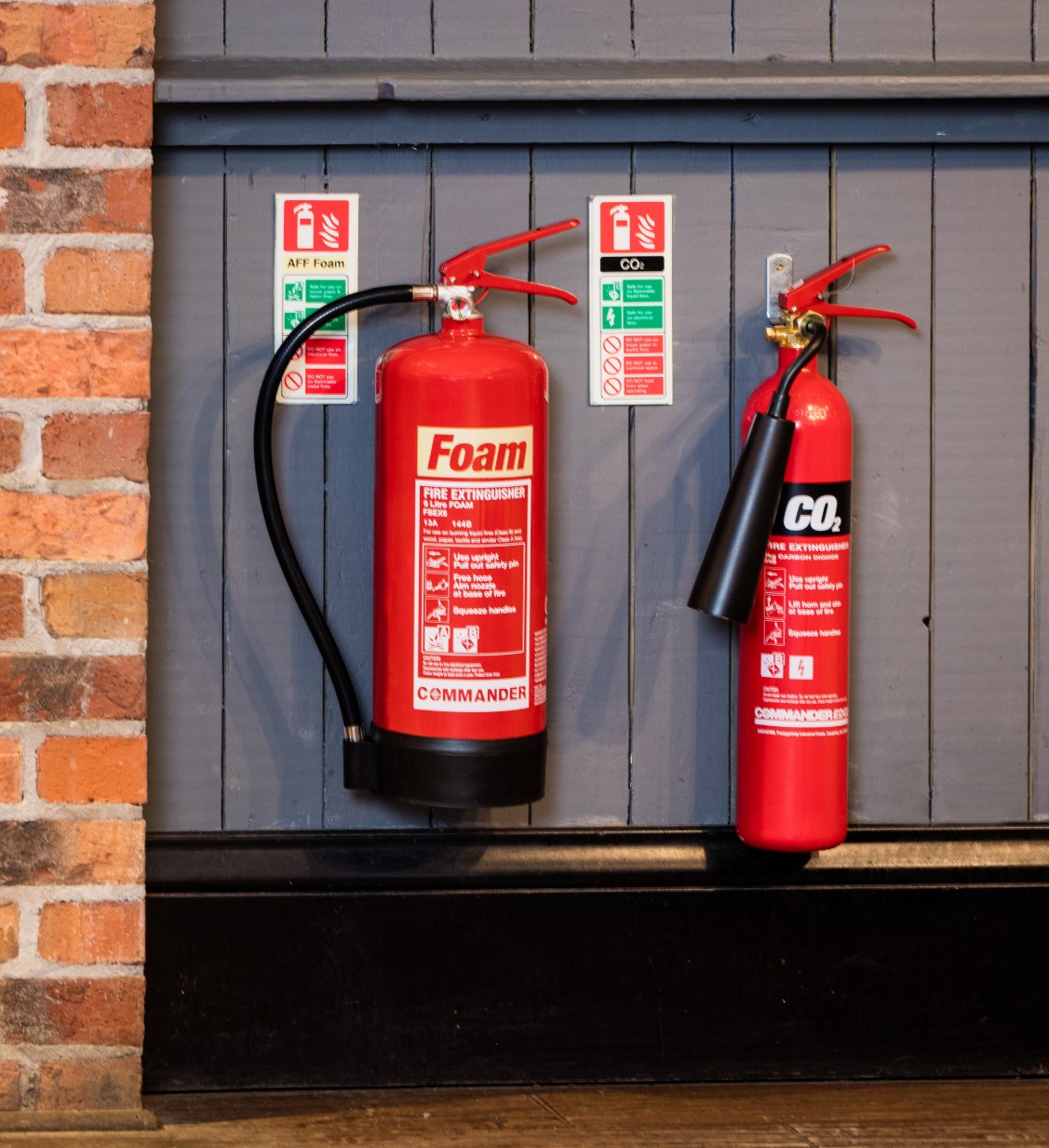
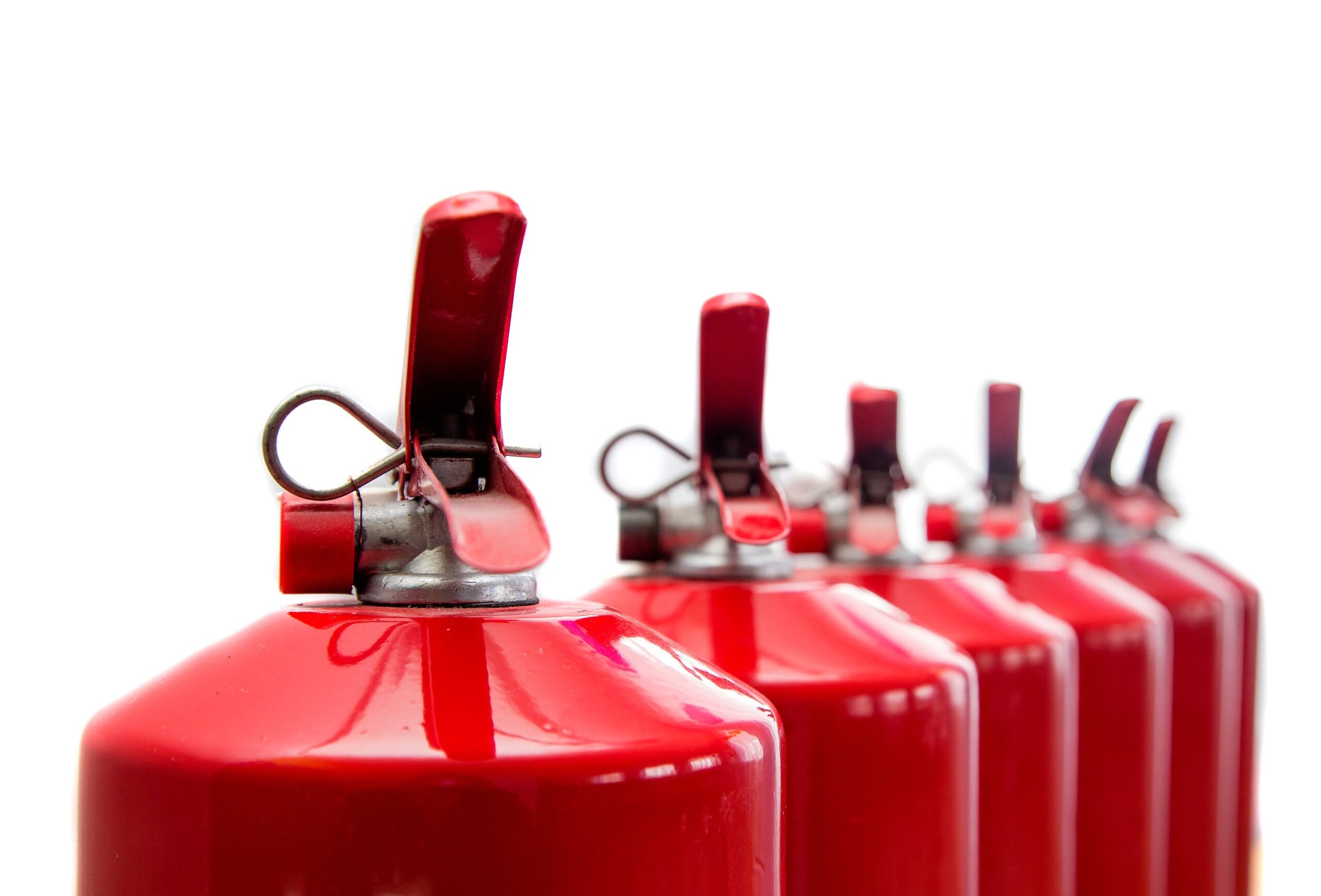
Is it as simple as screwing a bracket to the wall?
Once installed, the extinguisher should always be 'commissioned'. Commissioning is very similar to a basic service, but carried out on a brand new fire extinguisher and must always be carried out by a suitable competent engineer. To complement your new fire extinguishers, correct signage to BS 5499 should also be fixed to the wall, stand or cabinet.
How much will it cost?
Installation is a fairly straightforward process for a trained engineer and they can be fixed into brick, block, concrete, timber or plasterboard walls with appropriate fixings. Rates vary depending on the exact type of installation required, but start at £9+VAT for a simple bracket install.
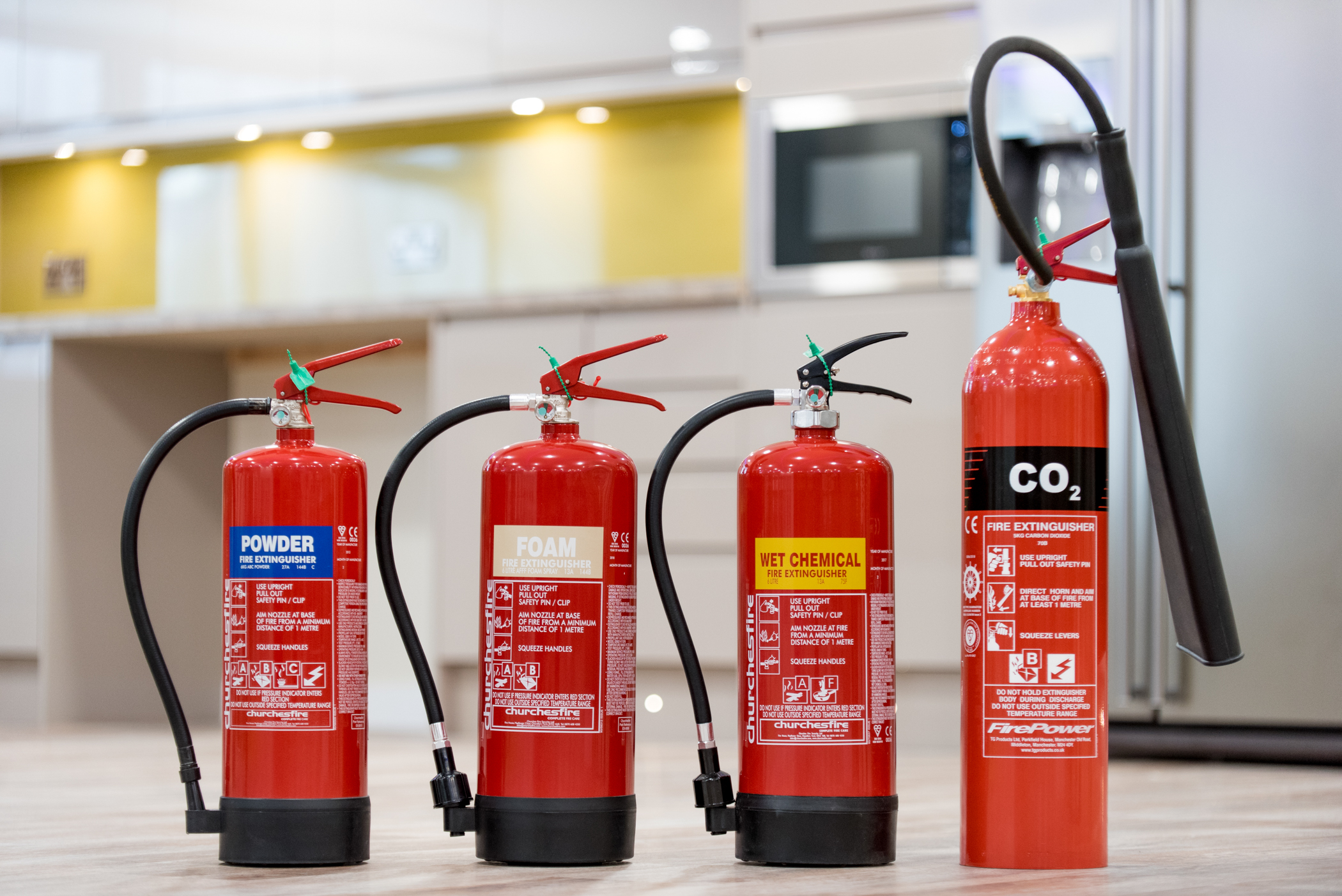
Do you need fire extinguishers installing? Get in touch for a quotation or to arrange a site visit
Call us today on 0115 727 0160 or Get a Quote online
Frequently Asked Questions
What are the different colour codes on a fire extinguisher?
BSEN3 is the standard that dictates fire extinguishers should be 95% red with up to 5% of another colour to identify the type of extinguisher. The different colour codes are:
Water = Red
Dry Powder = Blue
Foam = Cream
CO2 = Black
Wet Chemical = Yellow
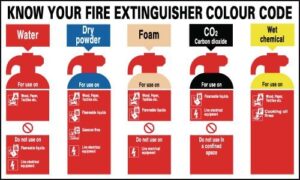
Why are there different types of fire extinguisher?
Different types of fires have different characteristics. What they are fuelled by significantly alters how they must be extinguished. The different extinguishers are then located in different areas of the building to ensure that the risks of that area are sufficiently covered.
Are any fire extinguishers all purpose?
None can ever be sold as ‘all purpose’ as some specialist materials will require specialist extinguishing equipment, however some extinguishers are ‘multi-purpose’ and can extinguish different types of fires.
What types of fire extinguishers can be used on what types of fires?
This handy graphic shows you exactly what type of fire each extinguisher can be used on. If you’re not sure or if you have specialist risks such as flammable metals, please get in touch for details of our risk assessment & fire extinguisher selection service.
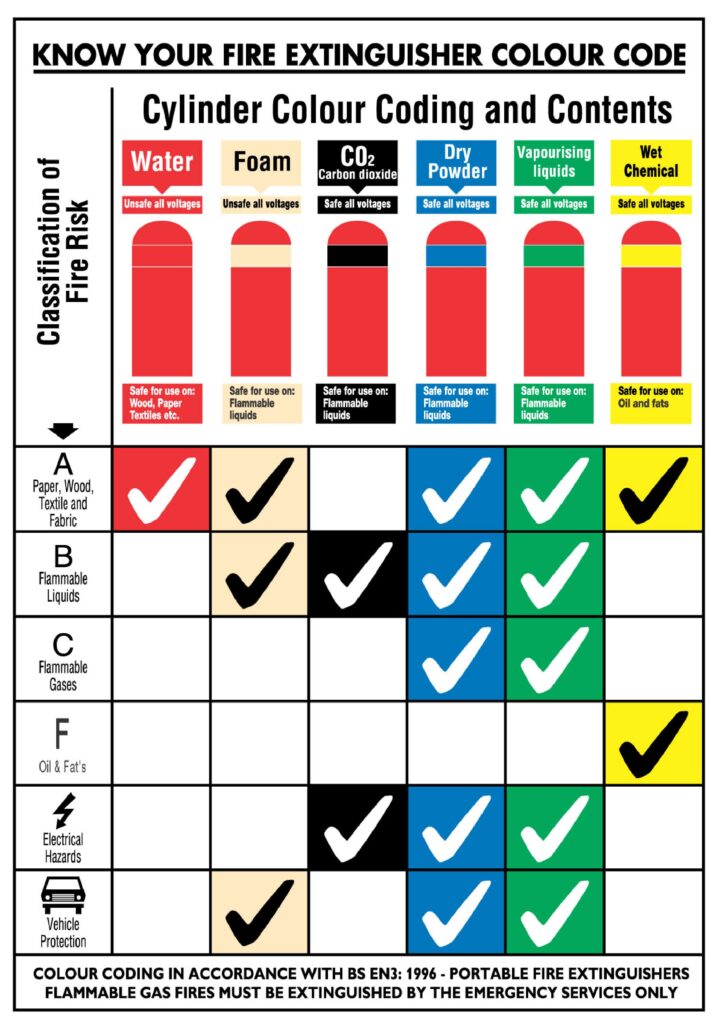
How often should a fire extinguisher be serviced?
At least once per year, with annually being the most common frequency of servicing.
How do you dispose of a fire extinguisher?
Fire extinguishers must be disposed of by a competent person. If they are under pressure they are extremely dangerous and should never be placed in general waste. The contents must be disposed of in different ways depending on what they are. The bodies, once empty and unpressurised, are mostly metal and will be sent for recycling once made safe by a fire extinguisher engineer. To make it simple we can deal with this for you while servicing.
Can you refill extinguishers?
Mostly, yes, although it depends on the type. Refilling Dry Powder extinguishers is not straightforward as the valves require cleaning to make sure the power has not contaminated it on discharge. Aerosol type extinguishers are sealed and cannot be serviced. For some types, it’s cheaper to buy new & recycle the old extinguisher than to refill.
What height should extinguishers be stored at?
Any extinguishers over 2kg, and a 2kg CO2, should have their handles mounted at 1m from the floor level.
Any fire extinguishers smaller than this, should have their handles mounted at 1.5m from the ground.
[1] The Health and Safety at Work etc. Act 1974 - Nottinghamshire Live - Nottinghamshire Fire & Rescue False Alarms